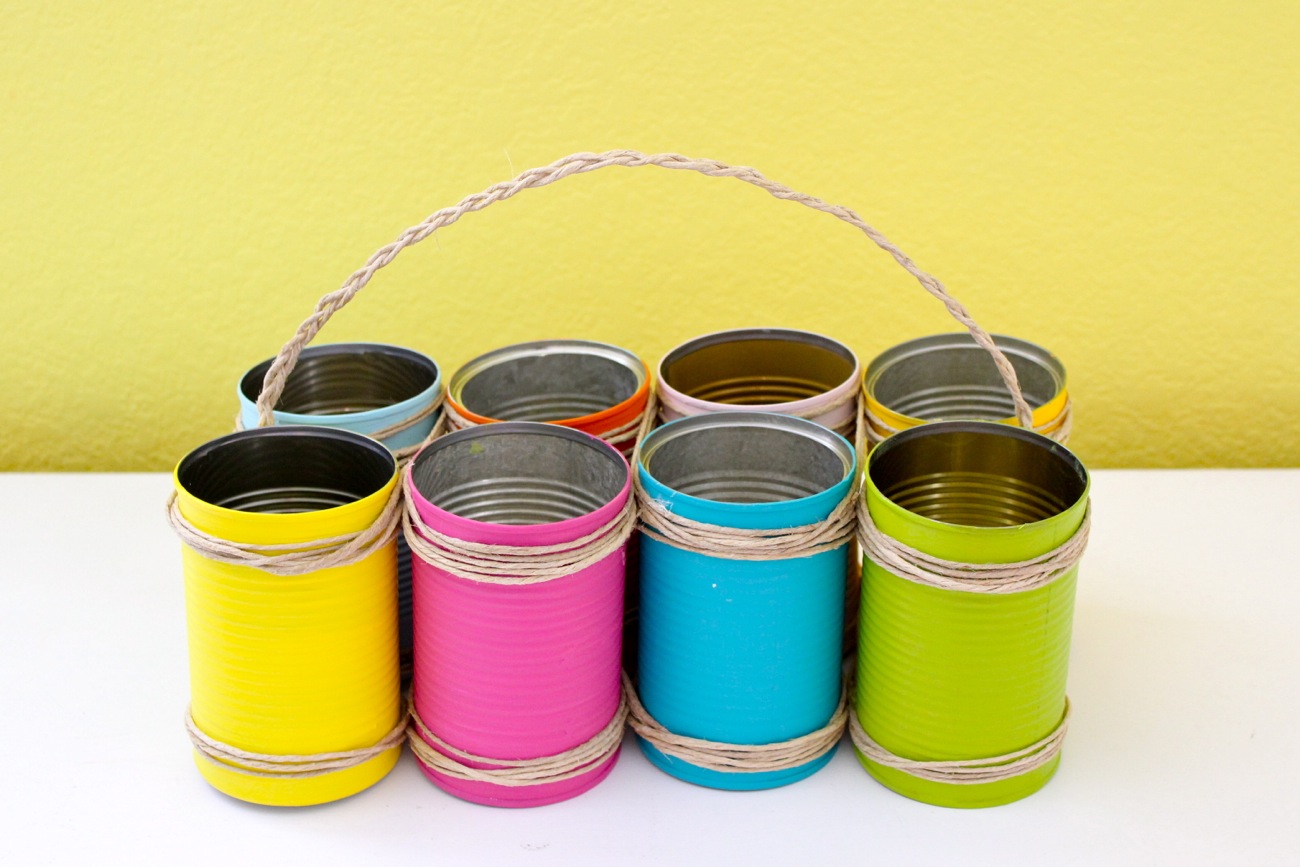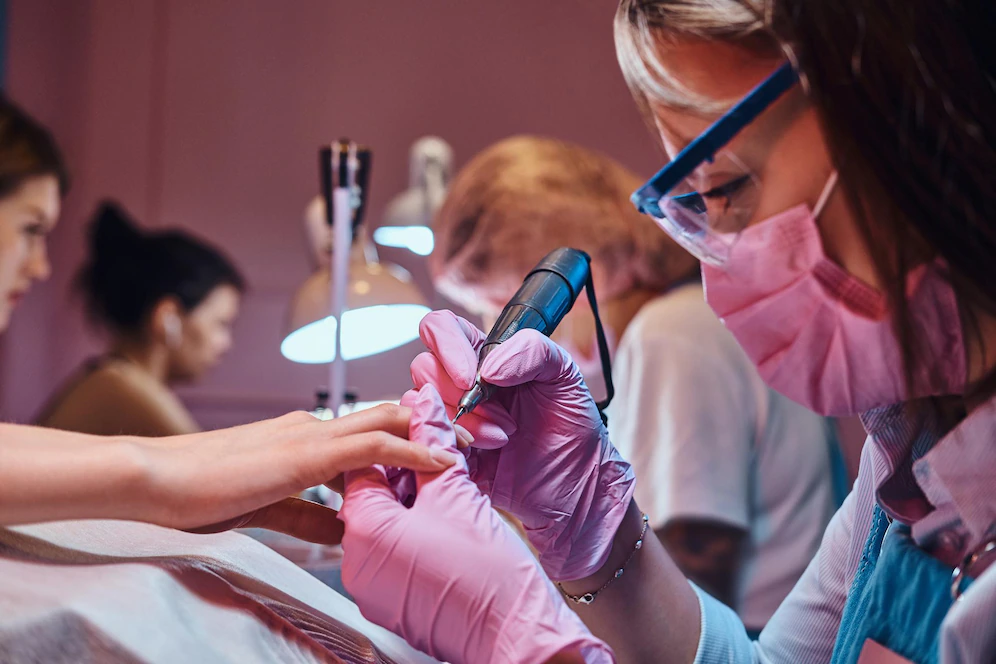I guess you are super exited to try acrylic paint on metal. No doubt, when it comes to the realm of canvas artistry, acrylic paint has long been hailed as an artist’s trusted ally.. But , can you use acrylic paint on metal?
Acrylic paint can be used on metal surfaces. However, you need to prime it first. Priming prepares the metal surface, ensuring better adhesion and durability of the paint. By applying a suitable primer, you create a solid foundation that allows the acrylic paint to adhere effectively, resulting in a vibrant and long-lasting finish.
To help you out, I wrote a step-to step guide to teach you everything you need to know before attempting to use acrylic paint on metal. It will also show you how to prime, apply and seal acrylic paint on metal for lasting results. Let’s get to it!
Related Reading
- Mod Podge for Metal
- Can You use Acrylic Paint on Wood?
- Can You Use Acrylic Paint on Leather?
- Can You Use Acrylic Paint on Metal?
- Can You Use Acrylic Paint on Shoes?
- Can You Use Acrylic Paint on Skin?
A Simple Guide to Using Acrylic Paint on Metal
:max_bytes(150000):strip_icc()/how-to-paint-metal-4846919_hero_01-f52e1c0023b443ecb52cf4007a1398f8.jpg)
Acrylic paint is easy to use and can be used on many surfaces such as wood, plastic, fabric, skin, leather and even on your shoes( that’s right) . It is one of the most common types of paint used for craft projects. So, here’s how to use acrylic paint on your metal surface;
1) Clean Your Metal
Now, before you even think of starting painting, make sure that your metal piece is clean. You can wipe it down with soap and water to remove dirt and grease. And, if there are scratches or dents in the metal, fill them with plumber’s putty before you begin painting so that they don’t show through the paint later on. Some people sand it down with grit paper., which is fine but you need to use 120 grit sandpaper to remove any old and damaged paint.
Sanding down metal surfaces before applying acrylic paint offers several notable benefits. First and far most, sanding helps create a smooth and even texture, ensuring better adhesion of the paint to the metal surface. This promotes a more uniform and professional-looking finish.
2) Apply Primer
Next, use primer before you apply any type of paint so that it adheres better to the surface. Choose a primer made specifically for metal if possible, as it will create a better base for your finished product than regular acrylic primer would. I totally recommend MyArtscape Acrylic Paint Set, Enclosed within a robust box, the twelve paint jars provide a secure storage solution for your precious paint
3) Paint Your Metal Piece
Paint your piece with acrylic paints using an artist brush or other applicator tool. Acrylics dry quickly so work quickly when applying them to your project, but don’t worry about getting too much on there because you can always wipe off extra paint using a rag dampened with water later on if needed (but try not to do this too much as it can cause the paint to crack).
4) Seal the Paint with a Sealer( Optional)
When the final coat of acrylic paint is dry, you’ll need to seal it. Acrylics are water-soluble and will begin to fade if exposed to water or moisture so you need to protect your painted metal with some kind of sealant. Besides, there are many different kinds available-from spray paints to acrylic varnishes-but most people opt for clear lacquer because it dries quickly (in about an hour) and isn’t too expensive or difficult to find at local hardware stores or art supply stores.
Related Post: Can You Use Acrylic Paint on Glass?
How Long Does It Take for Acrylic Paint to Dry on Metal?
The drying time of acrylic paint will vary depending on the thickness of your paint layer, the temperature and humidity level in your studio, and whether you are painting with gloss or matte.
For example, if you are painting a large metal sculpture with thick layers of gloss acrylic paint, it may take 24 hours or more for the paint to dry completely. However, if you are painting small pieces of metal with very thin layers of matte acrylics, it might only take 30 minutes to an hour for them to dry completely.
There are some additional factors that can affect the drying time of acrylic paints:
- The temperature and humidity level in your studio
- The type of metal you are applying the paint onto (e.g., aluminum versus steel)
- How thickly you apply the paint
Do I Need to Prime Metal Before Painting?
When it comes to painting your metal furniture, you have a couple of options. You can choose to prime the surface of the metal before painting it, or you can simply paint over it without any primer. Again, priming metal is important because it helps block out any holes or scratches that may be on the metal, so that when you apply your top coat of paint, it will look smooth and even.
If you don’t prime your metal first, then you may be left with some imperfections in your final product. For example, if you want to paint a table top that has some scratches in it as well as some dings and dents, then you might want to prime this table top before painting it. This way when you apply your first coat of paint over all of these imperfections, they won’t show up in the final product because they have been covered up by the primer first.
How to Seal Acrylic Paint on Metal?

Sealing acrylic paint on metal is a crucial step to protect the painted surface and enhance its longevity. Follow these steps to properly seal your acrylic paint on metal:
- Allow Sufficient Drying Time: Before sealing, ensure that the acrylic paint is completely dry. Typically, this may take a few minutes to hours or even overnight, depending on the thickness of the paint layer.
- Choose the Right Sealer: Select a sealer specifically designed for use with acrylic paints on metal surfaces. Look for sealers that are non-yellowing and provide protection against UV rays, moisture, and other environmental factors.
- Apply the Sealer: Use a clean brush or a foam brush to evenly apply the sealer over the painted metal surface. Personally , I prefer a foam brush. You can start by applying thin and even coats, ensuring full coverage. Avoid overbrushing, as it may disturb the underlying paint layer.
- Allow for Drying and Curing: Allow the sealer to dry . For optimal results, it is recommended to allow the sealed surface to cure for at least 24 hours before subjecting it to any stress or handling.
- Apply Additional Coats (Optional): Now, depending on the desired level of protection, you can apply additional coats of sealer. 3-4 are okay.
Expert Advice: Remember to work in a well-ventilated area . Sealing your acrylic paint on metal will safeguard your artwork and enjoy its beauty for years to come.
Best Primer for Acrylic Paint on Metal
RUST-OLEUM Flat White Clean Metal Primer Spray Paint

When it comes to priming metal surfaces, look no further than the RUST-OLEUM Flat White Clean Metal Primer Spray Paint. In my experience, it stands head and shoulders above the rest, earning its place as the best primer for metal projects.
One of the standout features you will love about this primer is its oil-based formula, which not only delivers exceptional adhesion but also provides a durable protective coating. The impressive rust prevention properties ensure that your metal surfaces remain shielded from corrosion, even in challenging environments. With this primer, you can have peace of mind knowing that your metal projects are well-protected and built to last.
What sets this primer apart is its versatility. While it excels in priming metal surfaces, it also proves to be an excellent choice for wood. This multi-purpose functionality makes it a convenient option for various projects, allowing you to tackle both metal and wooden surfaces with ease. Whether you’re refurbishing furniture or working on metal sculptures, this primer offers reliable performance across different materials.
Personally, I particularly appreciate is the flat white finish that the RUST-OLEUM Clean Metal Primer Spray Paint creates. This finish serves as an ideal base for any topcoat you desire. Whether you’re planning to apply vibrant colors or a more subdued palette, this primer provides a smooth, consistent foundation that allows your chosen topcoat to shine.
Will Acrylic Paint Stick to Aluminum?
Acrylic paint will stick to aluminum. However, you may need some preparation and primer before painting aluminum. Aluminum is a soft metal and the paint can scratch off easily if it isn’t properly prepared. More so, if you have bare metal or an unfinished surface on your aluminum, you can use a fine grit sandpaper to remove any oxidation or scale that may be present on the surface.
Once your metal has been prepared and cleaned, apply several coats of a primer specifically made for metal surfaces such as Rust-Oleum Universal Bonding Primer or Krylon Workable Fixative Spray Adhesive. This will ensure that your metal is ready for painting with acrylics.
In addition, acrylic paints dry fast so you’ll need to work quickly with this type of paint if you’re covering large areas of metal. In addition, make sure you’re using a quality brush designed for acrylics because cheap brushes can lose their bristles when used with this type of paint.
Can I Use Acrylic Paint on Metal Outside?
You can use acrylic paint outside. However, there are some things you should watch out for when applying acrylic paint to metal outside. First of all, make sure that the metal is clean and dry. You’ll want to make sure that any dirt or oils have been removed from the surface prior to applying your paint since these can inhibit adhesion.
The second thing you need to make sure you are not letting moisture wrapped in. If you have one side that has been painted and one side that hasn’t, it’s possible that moisture could get trapped between the two layers of paint causing peeling or flaking later on down the line. So, watch out for that. Finally, if you are using exterior acrylic paint, make sure that it is specifically labeled as such because not all acrylic paints will withstand outdoor conditions as well as others will.
Can You Use Acrylic Paint on Tin?

Acrylic paints are often used on tin metal surfaces because they dry quickly and are very durable. To use acrylic paint on tins , I would suggest using a primer first to seal the surface and make it more paintable. If you’re painting an old coffee can that already has some rust and grime on it, then it might not be necessary to use a primer first.
Acrylic paints come in many different colors and finishes, so you’ll want to choose one that matches the look you want for your project. Once you’ve chosen your colors, apply them with a brush or roller as desired.
If you’re painting a large area of tin, you may need several coats of paint to obtain complete coverage and good results (especially if your surface is uneven).
Frequently Asked Questions
How do I prepare my surface for painting?
The first step in preparing your surface for painting is to clean it thoroughly with mild soap and water. This will remove any dirt or grease from the surface. If you have any rust spots or other imperfections, you can sand them down with fine-grit sandpaper before cleaning with soap and water.
Can I use any kind of brush to paint acrylic paints on metal?
You can use any type of brush that has synthetic bristles because they won’t leave any loose fibers behind when they dry. I recommend synthetic brushes.
What colors work best for painting acrylics on metal?
You can use any color of acrylic paint that you like, as long as it’s not too thick or goopy. You also need to make sure that the paint is dry before you add another layer; otherwise, it won’t stick well.
Is there a special type of acrylic paint that works better than others?
Any brand or type of acrylic paint will work just fine for this project as long as it is acrylic. Just avoid using ones that are very thick or goopy because they won’t stick well to the metal surface and might look messy when applied over existing paint jobs
Conclusion
Acrylic paint can indeed be used on metal, but with some caveats. Acrylic paint is not a good choice for covering large areas, since it tends to crack and flake after doing so. Additionally, because acrylic paint is water-based, most surfaces that are painted with acrylic will need to be sealed after the paint dries. Oftentimes, this can be done by simply waiting for the paint to dry or applying a sealant. Happy painting !
SOURCES
- Does acrylic paint work on metal?
https://www.quora.com/Does-acrylic-paint-work-on-metal
- How to Paint Acrylic Paints on Metal
https://www.ehow.com/how_7819634_paint-acrylic-paints-metal.html
- Solved! The Best Paint for Metal
https://www.bobvila.com/articles/best-paint-for-metal/
- What Kind of Paint Do You Use on Metal Surfaces?
https://www.hunker.com/13412467/what-kind-of-paint-do-you-use-on-metal-surfaces
- Individual Metallic Acrylic Paint Set
https://www.amazon.com/shiny-reflective-metallic-acrylic-student-paint-set/dp/B07NYY8XNP






